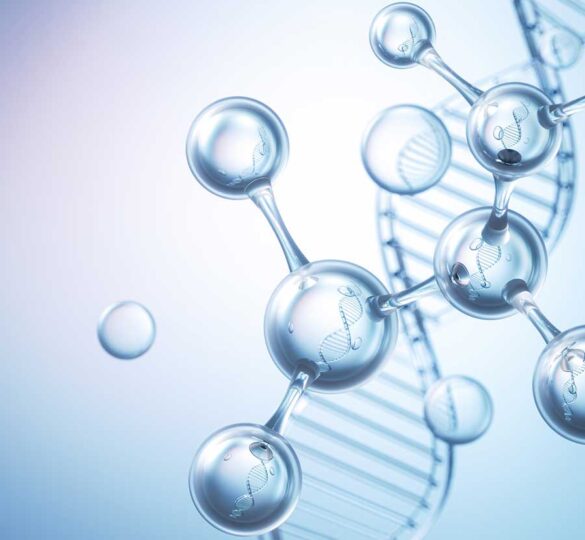Making Glaucoma Treatment Even Easier With Sustained Release Medication
Sustained-release medication can increase patient compliance and result in a drug delivery system that is less inconvenient and more efficient.

For many people with glaucoma, using eye drops every day can feel like a constant chore. Remembering to take them at the correct times isn’t always easy. Some drops can sting or cause redness, and your eye may lose much of the medication before it has a chance to work.
Researchers are exploring sustained-release treatments — options designed to make life easier while still protecting your vision. Instead of applying drops multiple times a day, these treatments slowly release the medication over time. These types of treatments are typically inserted into the eye and require no involvement from you!
With fewer interruptions to your routine, sustained-release medications can help you stay on track with your treatment, reduce discomfort, and free you from the stress of daily dosing so you can focus more on living your life and less on managing your glaucoma.
Currently Available Sustained-Release Options
Currently, two sustained-release drug implants are FDA-approved for the treatment of patients with open-angle glaucoma or ocular hypertension. They are: Durysta Ⓡ (bimatoprost intracameral implant) and iDose TR Ⓡ (travoprost intracameral implant). These advances show the field is moving toward “drop-free” glaucoma therapy — making it easier to keep eye pressure under control and protect vision.
Once in place, they rest in front of your eye and steadily let out the medication you need. These implants have successfully reduced or even eliminated the need for intraocular pressure (IOP)-lowering eyedrops for months to even years in some patients. Let’s explore the similarities and differences between these two options:
Durysta
Durysta, a tiny biodegradable implant from Allergan/AbbVie, gained FDA approval in March 2020. The active ingredient in Durysta is bimatoprost, the same prostaglandin as in Lumigan eye drops, except a Durysta implant contains 10 mcg (or 0.01 mg) that is released very slowly over several months.
Two identical Phase 3 clinical studies compared a single Durysta placement to twice-daily timolol eyedrops. In both trials, patients with the Durysta implant lowered their eye pressure by about 30% (5–8 mmHg) over 12 weeks, compared to their levels before the implant. The IOP reduction was found to be statistically non-inferior (or just as good as) the IOP reduction seen with twice-daily timolol eye drops.
The duration of IOP lowering will be different for everyone, but an 18-month study found that over 70% of eyes didn’t need any extra IOP-lowering treatment throughout the entire follow-up period. Other studies have shown a sustained IOP reduction for up to two years after a single administration!
Because the Durysta implant is biodegradable, the doctor inserts it once and doesn’t need to remove it later. However, Durysta is currently only approved for a single administration due to the potential for cornea damage seen in studies where patients received multiple inserts over a year. The most common adverse event in Durysta clinical trials was conjunctival hyperemia (eye redness), observed in approximately 27% of patients.
iDose TR
iDose TR is a tiny implantable titanium device that anchors into the wall of the eye. Glaukos Corporation produces it, and it was FDA-approved in December 2023. The active ingredient in iDose TR is travoprost, a prostaglandin analog demonstrated to lower IOP by increasing uveoscleral outflow. A single iDose TR contains 75 mcg (0.075 mg) of travoprost and gradually releases it over many months.
In two identical Phase 3 clinical trials, researchers compared a single iDose TR implant with twice-daily timolol eye drops. They found that iDose TR lowered eye pressure by 6.6 to 8.5 mmHg over 12 weeks, compared to the pressure before the implant. The timolol control group showed a similar reduction in eye pressure.
A key finding in the clinical trials was the high percentage of patients who were able to stop using their daily eye drops. Twelve (12) months after a single administration, 81% of iDose TR subjects were completely free of topical IOP-lowering medications. Many patients maintained a “medication-free” status, and follow-up data showed that about 70% still kept their eye pressure well-controlled on the same or fewer medications after three years!
The most common ocular adverse reactions (in 2-6% of patients) included increases in intraocular pressure, iritis, dry eye, and ocular hyperemia. Conjunctival hyperemia occurred at a very low rate of 3%, which is much lower than the rate seen with topical prostaglandin analogs.
Sustained-Delivery Devices of the Future (Not Yet Approved)
The field of sustained-release glaucoma devices is a very active area of research and development. While Durysta and iDose TR are the only two FDA-approved options, several other promising devices may gain approval in the coming years. Here are some of the sustained-release devices that show significant promise:
PAXTRAVA (formerly OTX-TIC) (Ocular Therapeutix): PAXTRAVA is a biodegradable hydrogel implant like Durysta, which contains 26 mcg (0.026 mg) of travoprost, the exact prostaglandin analog in iDose TR. In mid-2024, Ocular Therapeutix reported positive six-month topline results in its Phase 2 clinical trial, where a single PAXTRAVA implant significantly reduced IOP by 24-30% at 6 months post-implant. 81.3% of treated eyes did not require any more IOP-lowering therapy through six months, and the majority of adverse events were considered mild.
Other Phase 2 results demonstrated complete or significant degradation of the implant in 64.5% of implants, suggesting that redosing may be possible. Ocular Therapeutix is preparing Phase 3 clinical trial designs now, which are required before FDA approval can be sought.
Intraocular Lens (IOL) Drug Delivery Platform (SpyGlass Pharma): The combination of cataract surgery and sustained-release glaucoma treatment represents a novel approach. The platform combines a standard IOL with a component that releases bimatoprost for up to three years.
The company reported first-in-human clinical trial results in April 2025, which showed that all 23 patients who received cataract surgery with a SpyGlass IOL had significantly reduced IOP at 18 months. Pre-surgery (baseline) IOP was approximately 25 mmHg, compared to 14.1 at 18 months post-surgery. Furthermore, all patients remained off all their topical IOP-lowering medications for the 18 months. The company is actively preparing to launch two pivotal Phase 3 trials.
Latanoprost Free Acid Sustained-Release Ocular Implant (PolyActiva): The biodegradable implant — much like Durysta — is intended to release latanoprost. The company (PolyActiva, based in Australia) has demonstrated that the implant rapidly degrades over the course of 4-6 weeks, which may allow for repeat dosing. The company has already conducted a Phase 2 study in Australia. It has recently begun a Phase 2 clinical trial in the US, which will assess the safety and efficacy of two doses of the implant in 75 patients over 58 weeks.
Participants will be randomized to receive either latanoprost eye drops, an 80 mcg (0.08 mg) or 160 mcg (0.16 mg) implant in one eye, and will receive a second implant at 26 weeks. If the Phase 2 trial yields positive results, the company’s next step will be to move into Phase 3 trials in preparation for a potential FDA submission.
Evolute Punctal Plugs (Mati Therapeutics): Mati Therapeutics is in the process of developing an L-shaped punctal plug that is inserted into the tear duct (in the corner of the eye, by the nose), where it gradually releases medications targeting allergies, post-op pain, or inflammation after cataract surgery or glaucoma.
The company has completed multiple Phase 2 multicenter clinical trials with the Evolute device, which contains either latanoprost (previously) or travoprost (more recently). In the most recent pilot, open-label, multi-center clinical trial, researchers enrolled 12 subjects, inserted a Mati Evolute punctal plug containing 166 mcg (0.166 mg) of travoprost into their lower tear duct, and followed them for 90 days. While the patients achieved lower IOP in the 90-day timeframe, detailed results are not currently available.
Right now, these devices are still in the research stage. More clinical trials are needed before they become FDA-approved and widely available in the U.S.
What This Means for People Living With Glaucoma
- A glimpse of the future: Research is moving toward more precise, long-lasting treatments that could make glaucoma care easier, more comfortable, and more effective.
- Eye doctor recommendations: Ask if currently available sustained-release implants might be right for your treatment plan.
Help Us Find a Cure
Glaucoma treatment is evolving toward long-lasting, drop-free options that can simplify daily life while preserving vision. From biodegradable implants to medicated contact lenses and future drug pumps, research continues to bring promising choices closer to reality. Talk with your eye doctor about the latest treatments available now and what might be on the horizon — because staying informed is one of the best ways to protect your sight.
While there is no cure for glaucoma, advancements in research continue to bring us closer to finding one and restoring vision loss. You can help find a cure by donating cash, stock, or a vehicle. Your support will give hope to those living with glaucoma and accelerate our search for a cure and vision restoration.
The tireless work of researchers continues to enhance our understanding of glaucoma on a daily basis. As a result, there’s great hope for new and improved treatments, including innovative drug delivery methods, laser treatments, and less invasive surgical techniques. You can help make that happen!
Posted on September 17, 2025. Reviewed for scientific accuracy by Cynthia Steel, PhD.

Cynthia Steel, PhD
Cynthia Steel, PhD is the Chief Scientific Officer for Glaucoma Research Foundation. With more than a decade of experience dedicated to the science and strategy behind ophthalmic therapies, her work is grounded in a commitment to improving patient outcomes and translating cutting-edge science into meaningful clinical applications.